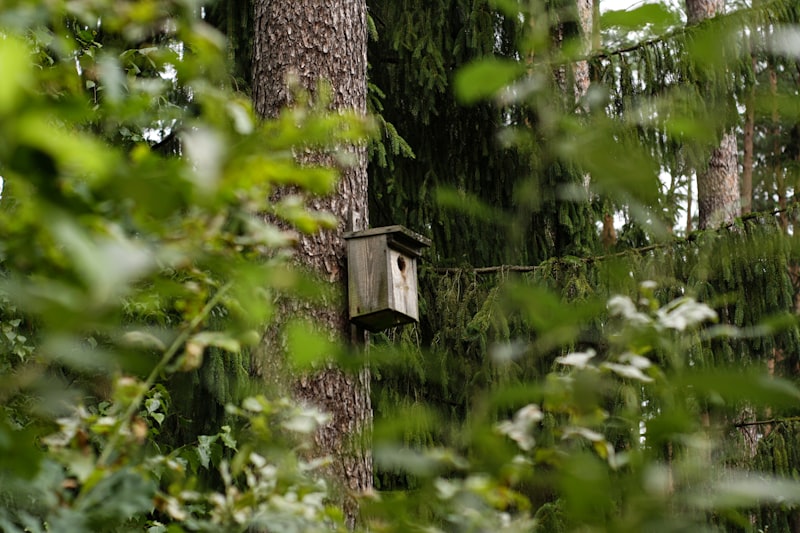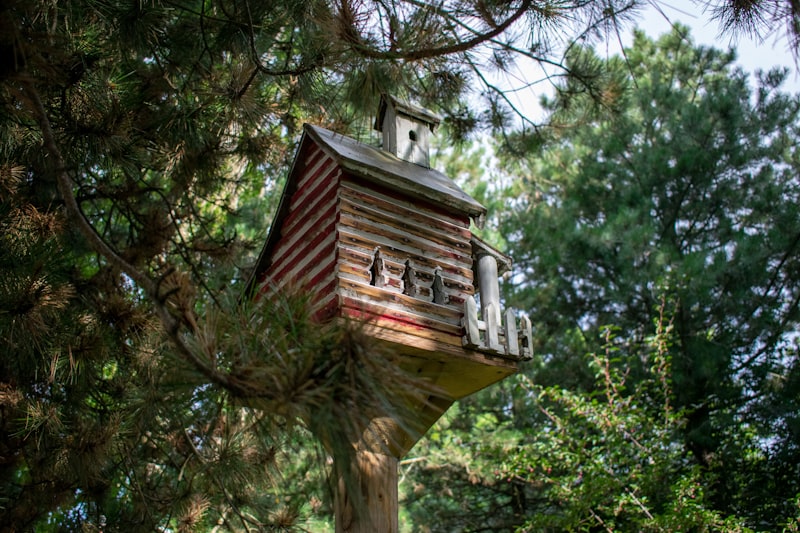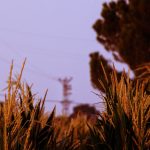Building a birdhouse for wild birds can be a rewarding and enjoyable project that not only enhances your backyard but also provides shelter for feathered friends. Whether you’re a seasoned woodworker or a DIY enthusiast, constructing a birdhouse is a relatively simple task that requires basic materials and tools.
To start, gather your materials: untreated wood (such as cedar or pine), screws or nails, wood glue, a saw, measuring tape, and a drill. Choose a design that suits the birds you want to attract; different species prefer different entrance hole sizes and interior dimensions.
Begin by cutting the wood into appropriate pieces according to your chosen design. Typically, a birdhouse consists of six pieces: front, back, sides, roof, and bottom. Ensure the dimensions provide enough room for birds to nest comfortably while keeping predators out.

Next, assemble the birdhouse using screws or nails along with wood glue for added durability. Pay attention to details like ventilation holes and drainage to create a safe and dry environment for nesting birds.
Once assembled, you can customize the birdhouse with non-toxic paint or stain. Opt for natural colors that blend with your surroundings and avoid bright hues that may attract predators.

Finally, mount the birdhouse on a pole, tree, or building at least 5 feet above the ground, facing away from prevailing winds and direct sunlight. This placement helps protect nesting birds from the elements and predators.
By following these steps, you can create a welcoming haven for wild birds in your backyard while enjoying the satisfaction of building something beneficial for nature. Happy birdwatching!
Step-by-Step Guide: Building the Perfect Birdhouse for Wild Birds
Firstly, gather your materials. You’ll need untreated wood to ensure safety for the birds, as treated wood can release harmful chemicals. Cedar or pine are excellent choices due to their durability and resistance to decay. Ensure your wood is at least ¾ inch thick to provide insulation against varying weather conditions.
Next, decide on the birdhouse design. Different bird species prefer different entry hole sizes and house dimensions. Research the types of birds in your area and tailor your design accordingly. A common design features a sloped roof to shed rainwater and proper ventilation to maintain a comfortable interior temperature.
Now, measure and cut the wood according to your chosen design. Use a saw to carefully cut the panels for the birdhouse walls, roof, floor, and front/back pieces. Sand down any rough edges to prevent injury to the birds and to give your birdhouse a polished finish.
Assemble the birdhouse using weather-resistant screws or nails. Ensure the house is sturdy and secure, with no gaps that could allow predators to enter. Include a hinged side or removable roof for easy cleaning between nesting seasons, promoting bird health and hygiene.
Finally, choose a strategic location for your birdhouse. Mount it on a pole or attach it to a tree, ensuring it’s at least five feet off the ground and facing away from prevailing winds. Position it in a shaded area with minimal human disturbance, allowing birds to nest peacefully.
DIY Birdhouse: Crafting Homes for Feathered Friends in Your Garden
Dreaming of a garden filled with cheerful chirps and fluttering wings? Building a DIY birdhouse can transform your outdoor space into a haven for feathered friends. Crafting these tiny homes not only adds a charming touch to your garden but also provides a safe shelter for birds to nest and thrive.
Imagine a sunny morning, the soft rustling of leaves, and a symphony of bird songs emanating from your backyard. With a DIY birdhouse, you invite nature’s melodies right into your home. It’s a project that not only benefits the birds but also brings joy and serenity to your everyday life.
Building a birdhouse is simpler than it sounds. Start with gathering the right materials: sturdy wood, non-toxic paint, nails, and a hammer. Choose a design that suits your garden aesthetics – whether it’s a quaint cottage style or a minimalist box, ensure it has proper ventilation and drainage to keep the nest dry and comfortable.
As you assemble the pieces, think about the tiny inhabitants that will soon call it home. Positioning the birdhouse is crucial; place it in a quiet spot away from predators, preferably facing east to catch the morning sun. Birds appreciate a safe and peaceful environment where they can nurture their young without disturbance.
Why not add a personal touch? Paint the birdhouse in vibrant colors or decorate it with patterns that reflect your garden’s charm. It’s an opportunity to unleash your creativity while providing a functional sanctuary for your winged neighbors.
The satisfaction of seeing a bird family move into your handmade creation is priceless. You become part of their story, fostering a sustainable ecosystem right in your backyard. It’s more than just a DIY project; it’s a connection with nature that enriches your surroundings and nourishes your soul.
So, gather your tools, unleash your creativity, and embark on a journey to create homes for feathered friends. A DIY birdhouse is not just a craft; it’s a gesture of care towards wildlife and a beautiful addition to your garden sanctuary.
Essential Tips for Beginners: Constructing a Birdhouse That Birds Love
First off, let’s talk materials. Opt for untreated wood like cedar or pine. These are durable and safe for birds, unlike treated wood that may contain harmful chemicals. Remember, birds prefer natural materials that blend into their surroundings.
Size matters when it comes to birdhouses. Different bird species have different space requirements. For instance, bluebirds prefer smaller, cozy spaces while robins need a bit more room to stretch their wings. Research the specific birds in your area to determine the appropriate dimensions for your birdhouse.
Ventilation and drainage are crucial for the health and comfort of your avian visitors. Ensure your birdhouse has proper ventilation holes near the top to prevent overheating. Similarly, drilling small drainage holes at the bottom will keep the nest dry and prevent mold buildup.
Location, location, location! Just like in real estate, where you place your birdhouse matters. Most birds prefer their homes to be in quiet, sheltered spots away from predators. Mount your birdhouse at least five feet off the ground and ensure it faces away from prevailing winds and direct sunlight.
Safety is paramount. Avoid using nails or screws inside the birdhouse that could harm the birds or their chicks. Instead, use non-toxic wood glue or stainless steel screws on the exterior.
Lastly, add a dash of personality to your birdhouse. Painting it in natural, earthy tones can help it blend into the environment. However, avoid using bright colors that could attract predators or disturb the birds.
Materials and Tools Needed to Build Your Own Birdhouse
-
Wood: Opt for untreated cedar or pine boards, as they are durable and weather-resistant, ideal for outdoor use. Ensure the wood is at least ¾ inch thick to provide insulation and stability.
-
Wood Glue: Essential for securing joints and adding strength to your birdhouse structure. Choose a waterproof wood glue to withstand outdoor conditions.
-
Nails and Screws: Depending on your preference and the design, you’ll need galvanized nails or screws to assemble the birdhouse securely. Galvanized hardware resists rust, prolonging the life of your creation.
-
Roofing Material: Use galvanized metal, cedar shingles, or outdoor-grade plywood for the roof. This protects the interior from rain and provides insulation.
-
Drill and Bits: A drill is crucial for creating entrance holes, ventilation gaps, and assembling parts. Have a variety of drill bits on hand to accommodate different hole sizes.
-
Measuring Tape and Square: Precision is key in birdhouse construction. A measuring tape helps ensure accurate dimensions, while a square ensures corners are perfectly aligned.
-
Sandpaper: Smooth rough edges and surfaces before assembly to prevent splinters and ensure a neat finish.
-
Paints and Sealants (optional): Decorate your birdhouse with non-toxic paints to attract birds and add aesthetic appeal. Apply a bird-safe sealant to protect the wood from the elements.
-
Saw: A handsaw or circular saw for cutting wood pieces to size. Alternatively, a jigsaw can be handy for intricate cuts.
-
Hammer and Screwdriver: Basic tools for driving nails and screws into place.
-
Clamps: Keep parts steady while gluing and assembling to achieve tight joints.
-
Safety Gear: Wear safety goggles and gloves when cutting and handling wood to protect against splinters and debris.
Design Ideas: Creating Bird-Friendly Homes for Your Garden
One of the simplest yet most effective ways to make your garden bird-friendly is by selecting the right plants. Native plants are a top choice because they provide familiar food sources and shelter for local bird species. Plants like sunflowers, coneflowers, and native grasses not only add beauty but also attract birds with their seeds and nesting materials.
Adding water features can significantly enhance your garden’s bird appeal. A birdbath or a small pond not only provides drinking and bathing spots but also creates a focal point for both birds and human observers. Make sure the water is shallow enough for birds to safely bathe in, and keep it clean to prevent diseases.
Another key element is providing shelter and nesting opportunities. Birdhouses placed strategically around your garden can encourage nesting pairs to take up residence. Opt for houses with proper ventilation and drainage, and consider the specific needs of different bird species when placing them.
Incorporating feeders can also attract a variety of birds year-round. Different birds prefer different types of feed, so offering a variety like seeds, suet, and nectar can cater to a wider range of species. Place feeders in safe, visible locations where birds can easily access them but are protected from predators.
Lastly, minimize the use of pesticides and herbicides in your garden. These chemicals can be harmful to birds directly or by reducing their food sources. Instead, embrace natural gardening practices like composting and companion planting to maintain a healthy ecosystem that supports both plants and wildlife.
Attracting Wildlife: Build a Birdhouse and Welcome Feathered Visitors
Have you ever wanted to bring the delightful chirps and fluttering wings of birds closer to your home? Building a birdhouse could be your ticket to creating a haven for feathered friends right in your backyard. Not only does it add a touch of natural beauty to your surroundings, but it also provides a safe space for birds to nest, feed, and thrive.
Imagine waking up to the cheerful melodies of finches, robins, or blue jays right outside your window. By building a birdhouse, you’re not just inviting wildlife; you’re creating a mini sanctuary that benefits both you and your avian visitors. It’s like opening a cozy B&B for birds!
Building a birdhouse doesn’t have to be complicated. With a few simple materials like wood, screws, and some basic tools, you can create a charming retreat that birds will love. Plus, it’s a fun DIY project that can involve the whole family. You’ll get to unleash your inner craftsman (or craftswoman) and watch as your creation attracts a variety of bird species.
But why stop at attracting birds? A well-placed birdhouse can also contribute to the health of your garden. Birds play a crucial role in controlling insect populations and spreading seeds, which helps maintain a balanced ecosystem. It’s nature’s own pest control and gardening service, all in one feathered package!
So, where should you place your birdhouse for maximum effect? Think of it like real estate: location matters. Choose a spot that is sheltered from harsh weather and predators but still accessible for birds to come and go freely. A quiet corner of your garden or near a tree line often works best.
As you embark on this journey to build a birdhouse, remember, it’s not just about the structure itself. It’s about creating a welcoming environment that birds will instinctively be drawn to. With a bit of creativity and a love for nature, you can turn your backyard into a bustling hub of avian activity. Get ready to enjoy the sights and sounds of your new feathered neighbors!
Customizing Your Birdhouse: Tailoring Nesting Spaces for Different Bird Species
Imagine this: you have a neighborhood where everyone lives in identical houses. It might look neat, but it wouldn’t cater to everyone’s needs, right? Birds are no different. Each species has specific requirements for their nesting spaces. By tailoring your birdhouse, you’re essentially rolling out the welcome mat for a variety of winged visitors.
Let’s break it down. For example, if you’re hoping to attract a family of bluebirds, consider a birdhouse with a small entrance hole – about 1.5 inches in diameter. Bluebirds prefer their homes cozy and safe from larger predators. On the other hand, if you’re aiming for purple martins, think bigger and grander. These sociable birds prefer communal living, so a large multi-room birdhouse with plenty of compartments would be their version of a dream home.
Now, what about our feathery friends who like to hang out near water? Think ducks and swallows. These birds need birdhouses that are close to a water source. Imagine having a home where the grocery store, gym, and your best friends are all within walking distance – that’s how these birds feel when they have easy access to water from their birdhouse.
And let’s not forget our eco-conscious friends, the environmentally friendly birds like chickadees and titmice. They prefer birdhouses made from natural materials like untreated wood. It’s like choosing organic produce over processed foods – better for them and the environment.
Frequently Asked Questions
How do I choose the right location for a birdhouse
Learn how to choose the ideal location for a birdhouse with our concise guide. Discover tips on factors like bird species, safety from predators, weather protection, and optimal height and orientation.
What steps are involved in building a birdhouse
Learn the step-by-step process of building a birdhouse with our concise guide. From choosing materials to assembling and finishing, discover how to create a cozy haven for your feathered friends.
How can I attract wild birds to use the birdhouse
Learn effective methods to attract wild birds to your birdhouse with our concise guide. Discover practical tips and techniques to create an inviting habitat that encourages birds to visit and nest.
What are the ideal dimensions for a birdhouse
Discover the ideal dimensions for a birdhouse with our concise FAQ. Learn the recommended sizes that attract specific bird species while ensuring comfort and safety.
What materials do I need to build a birdhouse
A concise guide outlining the essential materials needed to construct a birdhouse, ensuring clarity and simplicity in understanding the requirements.



[…] How to Build a Birdhouse for Wild Birds […]
[…] How to Build a Birdhouse for Wild Birds […]
[…] How to Build a Birdhouse for Wild Birds […]